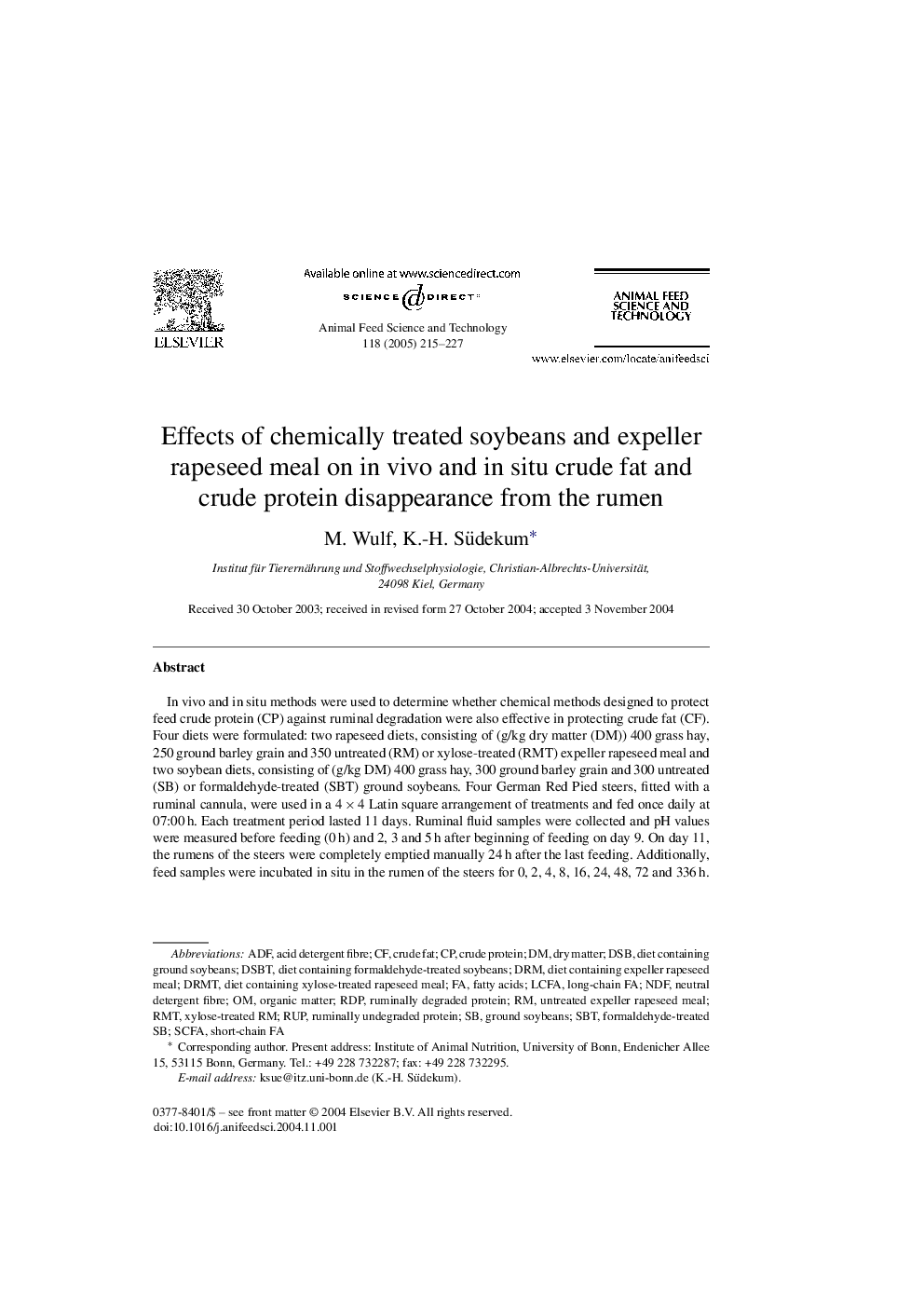| Article ID | Journal | Published Year | Pages | File Type |
|---|---|---|---|---|
| 8973808 | Animal Feed Science and Technology | 2005 | 13 Pages |
Abstract
In vivo and in situ methods were used to determine whether chemical methods designed to protect feed crude protein (CP) against ruminal degradation were also effective in protecting crude fat (CF). Four diets were formulated: two rapeseed diets, consisting of (g/kg dry matter (DM)) 400 grass hay, 250 ground barley grain and 350 untreated (RM) or xylose-treated (RMT) expeller rapeseed meal and two soybean diets, consisting of (g/kg DM) 400 grass hay, 300 ground barley grain and 300 untreated (SB) or formaldehyde-treated (SBT) ground soybeans. Four German Red Pied steers, fitted with a ruminal cannula, were used in a 4Â ÃÂ 4 Latin square arrangement of treatments and fed once daily at 07:00Â h. Each treatment period lasted 11 days. Ruminal fluid samples were collected and pH values were measured before feeding (0Â h) and 2, 3 and 5Â h after beginning of feeding on day 9. On day 11, the rumens of the steers were completely emptied manually 24Â h after the last feeding. Additionally, feed samples were incubated in situ in the rumen of the steers for 0, 2, 4, 8, 16, 24, 48, 72 and 336Â h. In vivo, steers fed the soybean diets had less CF and more DM, organic matter, neutral detergent fibre and acid detergent fibre in the rumen compared to the steers fed the rapesed diets at 24Â h after feeding. In situ, CF of all feedstuffs extensively disappeared from the bags and no treatment effect occurred. Concentrations of ammonia-N in ruminal fluid were lower for RMT and SBT than for RM and SB, indicating that CP of the treated feeds was protected against ruminal degradation, findings that are consistent with the in situ data. Treating ground soybeans with formaldehyde and expeller rapeseed meal with xylose, did not protect against CF degradation in the rumen, although CP protection was effective. Both in vivo and in situ methods were suitable to assess CP degradation in the rumen and both methods also indicated that chemical treatment had no effect on ruminal CF degradation, but the estimated extent of CF disappearance differed between the in vivo and in situ estimates.
Keywords
Related Topics
Life Sciences
Agricultural and Biological Sciences
Animal Science and Zoology
Authors
M. Wulf, K.-H. Südekum,
